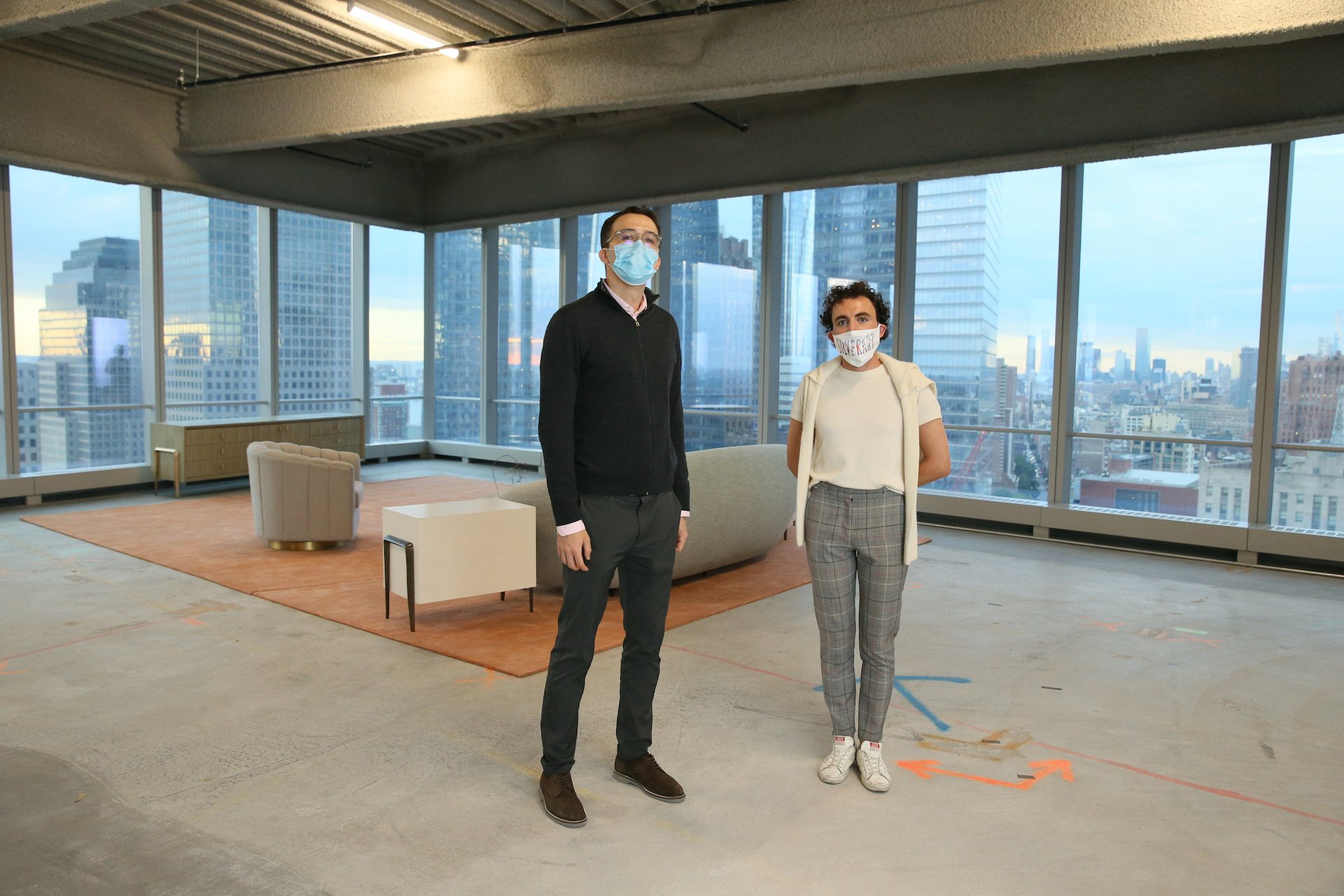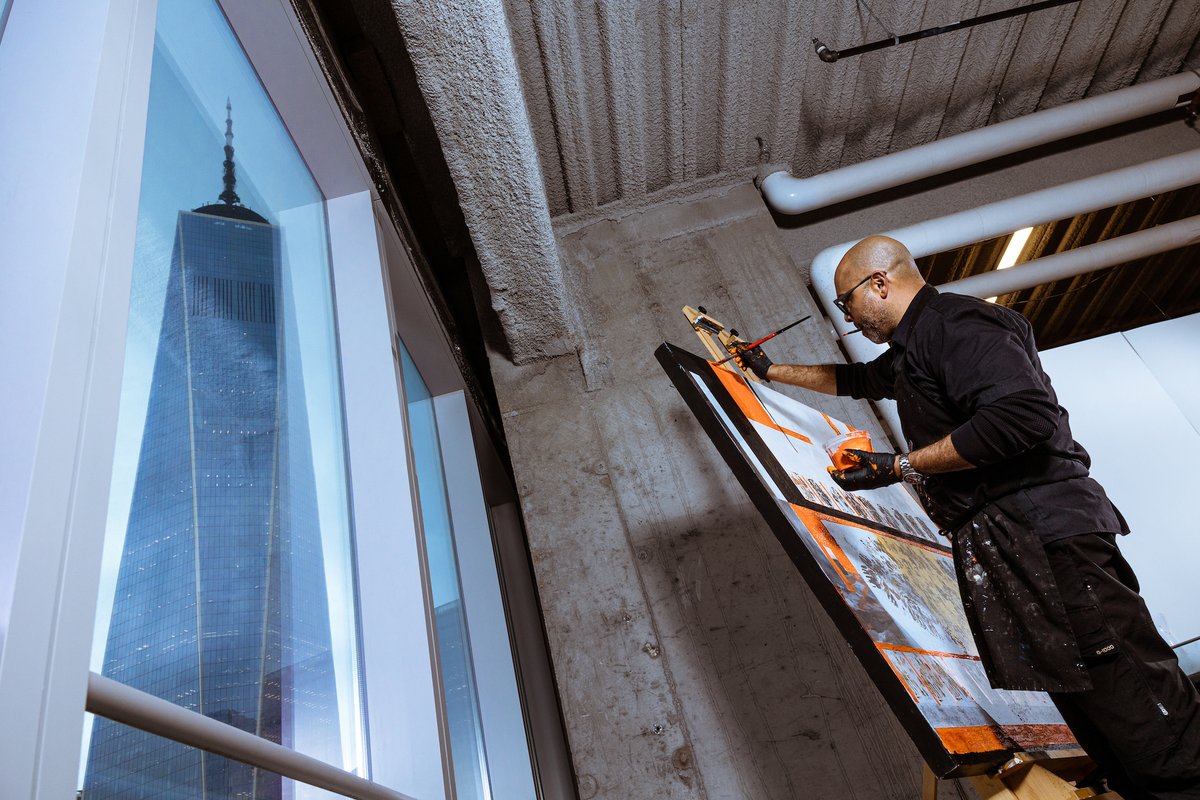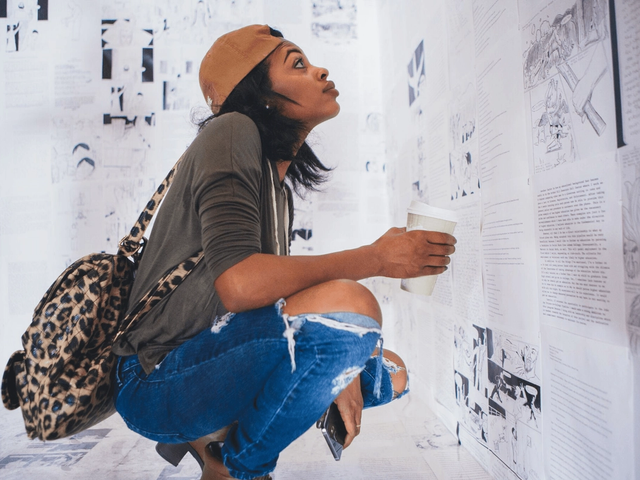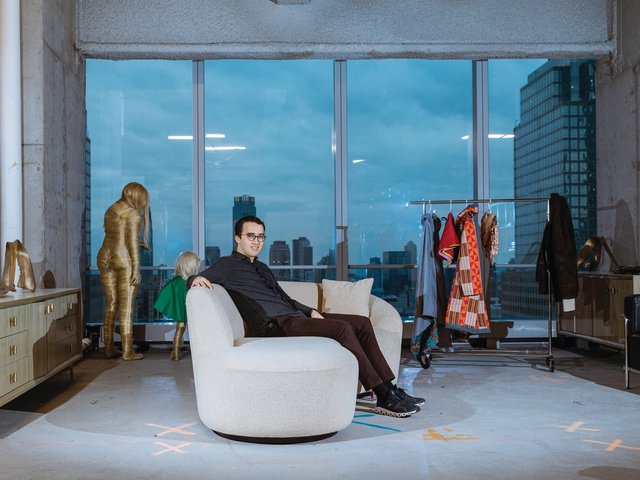An artist residency housed in some of the most expensive real estate in the western hemisphere is prioritizing artists who were previously incarcerated. This spring Silver Art Projects will open applications for its third round of year-long residencies, offering free studio space at the World Trade Center starting in June, along with stipends and mentorship for disadvantaged artists. With the support of a recent grant from the Art for Justice Fund, around a quarter of the 25 spots available will henceforth be reserved for artists reentering life after prison.
“It just made sense to bring in formerly incarcerated artists as a focused community that could be working alongside all the other marginalized communities we bring together,” including artists of colour, LGBTQ and disabled artists, says Joshua Pulman, who with Cory Silverstein co-founded Silver Art Projects in 2018 as a non-profit incubator for emerging and overlooked artists. The two college friends, who almost got fired from their day jobs in Lower Manhattan after a visit to a friend's studio in an outer borough on their lunch breaks took the entire afternoon, hatched the idea to bring artists to empty office space in the World Trade Center complex, which was redeveloped by Silverstein Properties, founded by Cory’s grandfather Larry Silverstein.

Cory Silverstein (left) and Joshua Pulman (right), the co-founders of Silver Art Projects Photo courtesy Silver Art Projects
The first cohort of artists moved into 40,000 sq. ft on the 28th floor of 4 World Trade Center in June 2020, when the country was erupting in protests after the murder of George Floyd. Social justice was formalized as a theme of the program with the 2021 cohort, selected by a six-member jury including Isolde Brielmaier, deputy director of the New Museum, and the artists Hank Willis Thomas, Chella Man and Tourmaline. Those three artists have been fixtures on the floor serving as mentors, with For Freedoms, the collective Thomas co-founded, sharing activities and opportunities for artists-in-residence to engage directly with social justice actions.
Among the artists currently in residence is Jared Owens, whose work was included in Nicole Fleetwood's groundbreaking book and exhibition Marking Time: Art in the Age of Mass Incarceration, which opened at MoMA PS1 in 2020. A multidisciplinary artist, Owens began making work during his 18 years of incarceration (he was released from federal prison in 2013). “Jared is like the social chair of the floor and he educated us a lot about what is happening and how important having arts in prison was for him and friends,” says Pulman. “Once he came into the building, it was just so clear what a different perspective he brings and how important his artwork is.”
Through Thomas, an earlier grantee of the Art for Justice Fund, Silver Art was introduced to the organization founded by the philanthropist Agnes Gund in 2017 to support activists working on political reform and artists changing the narratives around mass incarceration. “We began having conversations with Art for Justice about what it means to be active in this space and formulated the idea to reserve spots every year,” says Pulman, who envisions four or more residencies going to formerly incarcerated artists each year, depending on who applies, in perpetuity. (Last year Silver Art received 700 applications, up 25% from the first year.)

Jared Owens at work in his studio at 4 World Trade Center Photo by Josh Katz, courtesy Silver Art Projects
While the funds provided by the Art for Justice grant is significant, says Pulman, “being able to call upon the community of leaders they've assembled is a game-changer for our work”.
Owens described his residency as a godsend. “It offers a level of support I had no idea could exist in the free world,” says Owens, who, through the residency, has been exposed to curators, collectors and dealers. “The networking possibilities the program offers are real and tangible.”
For Gund, the work of artists to raise public awareness around reducing the prison population is as important as legislative reform. “We’re in a moment where the significant contributions of formerly incarcerated artists are finally being recognized by the art world and larger culture,” says Gund. “I applaud the Silver Art Projects’ decision to reserve residency spaces for this worthy group. I am confident these artists will benefit enormously from the experience and will continue to steer the important conversation about how the arts can help end mass incarceration in this country.”





